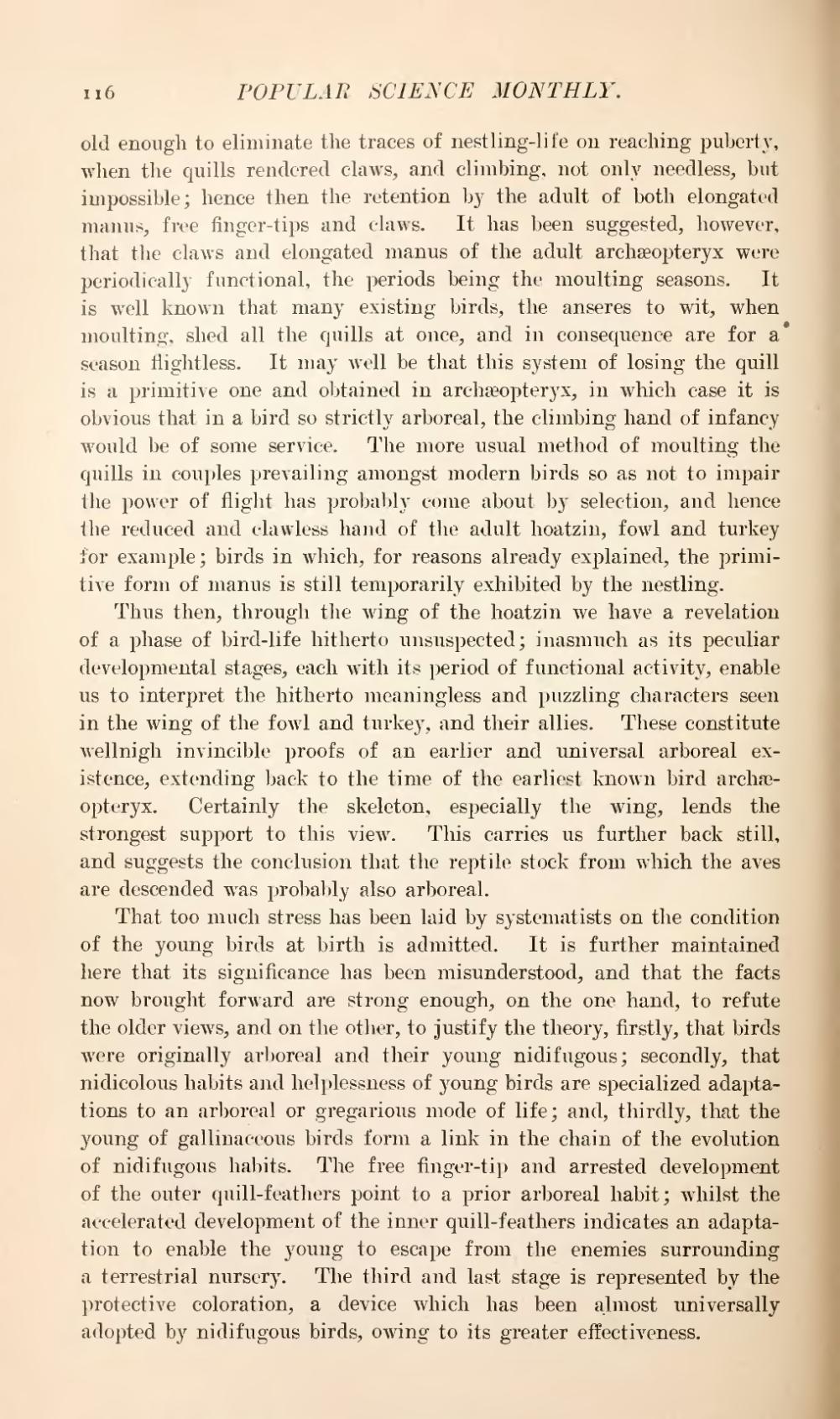old enough to eliminate the traces of nestling-life on reaching puberty, when the quills rendered claws, and climbing, not only needless, but impossible; hence then the retention by the adult of both elongated manus, free finger-tips and claws. It has been suggested, however, that the claws and elongated manus of the adult archæopteryx were periodically functional, the periods being the moulting seasons. It is well known that many existing birds, the anseres to wit, when moulting, shed all the quills at once, and in consequence are for a season flightless. It may well be that this system of losing the quill is a primitive one and obtained in archgeopteryx, in which case it is obvious that in a bird so strictly arboreal, the climbing hand of infancy would be of some service. The more usual method of moulting the quills in couples prevailing amongst modern birds so as not to impair the power of flight has probably come about by selection, and hence the reduced and clawless hand of the adult hoatzin, fowl and turkey for example; birds in which, for reasons already explained, the primitive form of manus is still temporarily exhibited by the nestling.
Thus then, through the wing of the hoatzin we have a revelation of a phase of bird-life hitherto unsuspected; inasmuch as its peculiar developmental stages, each with its period of functional activity, enable us to interpret the hitherto meaningless and puzzling characters seen in the wing of the fowl and turkey, and their allies. These constitute wellnigh invincible proofs of an earlier and universal arboreal existence, extending back to the time of the earliest known bird archæopteryx. Certainly the skeleton, especially the wing, lends the strongest support to this view. This carries us further back still, and suggests the conclusion that the reptile stock from which the aves are descended was probably also arboreal.
That too much stress has been laid by systematists on the condition of the young birds at birth is admitted. It is further maintained here that its significance has been misunderstood, and that the facts now brought forward are strong enough, on the one hand, to refute the older views, and on the other, to justify the theory, firstly, that birds were originally arboreal and their young nidifugous; secondly, that nidicolous habits and helplessness of young birds are specialized adaptations to an arboreal or gregarious mode of life; and, thirdly, that the young of gallinaceous birds form a link in the chain of the evolution of nidifugous habits. The free finger-tip and arrested development of the outer quill-feathers point to a prior arboreal habit; whilst the accelerated development of the inner quill-feathers indicates an adaptation to enable the young to escape from the enemies surrounding a terrestrial nursery. The third and last stage is represented by the protective coloration, a device which has been almost universally adopted by nidifugous birds, owing to its greater effectiveness.
